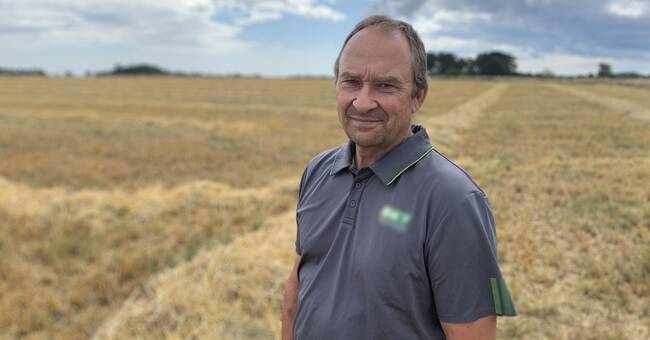- In the autumn nothing went wrong and not in the spring either.
It was only in April that you saw that something was not right, but then it was too late to do anything, he says.
Bengt Johansson looks worriedly over one of his autumn barley fields on eastern Öland.
He estimates that he will lose 60 tons affected by rubella, which is about half of the autumn harvest.
- Then the straw comes too, as an animal producer you are dependent on it.
250 bales that I can now buy instead.
So in total it can be 150,000 kronor that I lose on my 30 hectares, he says.
Spreads via lice
The rubella virus spreads via aphids which make the plants "red-gold colored" and create an uneven plant with weeds in the fields.
Have you been affected by rubella in the past?
- No, this is the first time.
2015 was the last time we were affected by rubella, but then I sowed a little later.
And the sowing time is of great importance, says Bengt Johansson.
Soot can infect all grains, but crops sown in early autumn are particularly susceptible to the virus.
The Swedish Board of Agriculture monitors
The combination of early sowing, a lot of aphids and an unusually warm and long autumn increases the risk of rubella.
It is possible to fight aphids, which carry the virus, when it is in the field with insecticides.
But it may only be used once by law.
The Swedish Board of Agriculture also has methods to be able to see in advance if there is any danger of infestation.
- We have a monitoring center where you can see if there are lice on the way in and we then warn through reports on our website, says Linda af Geijerstam plant protection adviser at the Swedish Board of Agriculture.
See what more can be done to avoid rubella in the clip

